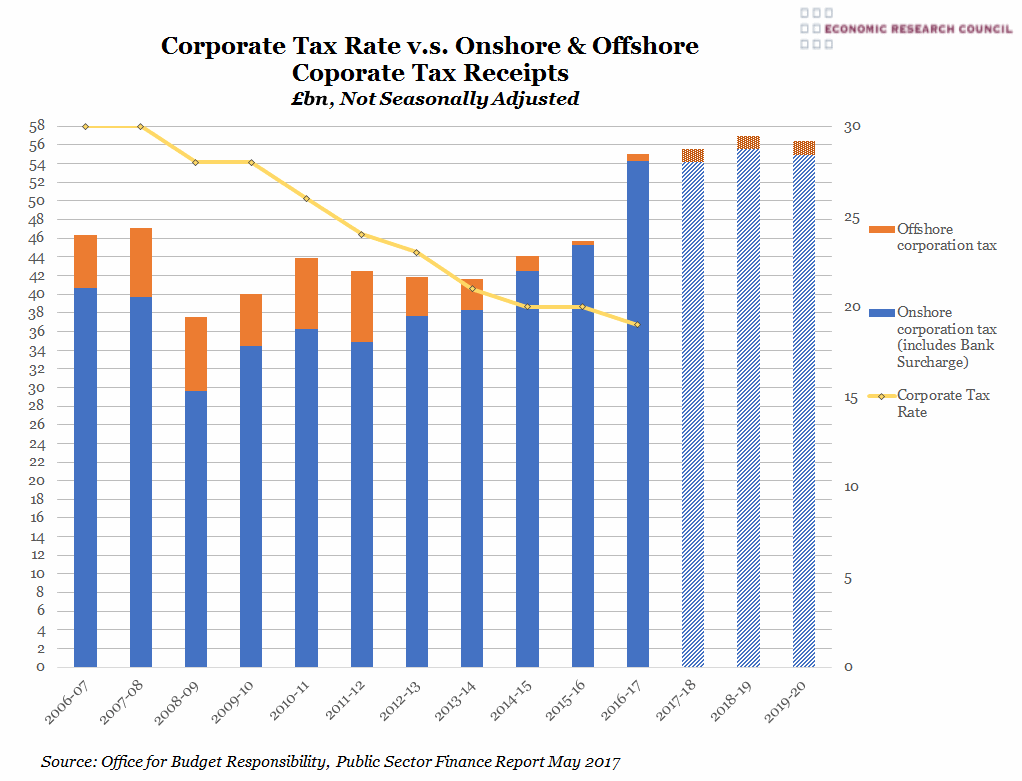Week 21, 2017: Corporation Tax Rates v.s. Receipts
Summary: The chart shows that, despite consistent reductions in the taxation rate, yearly receipts of corporation tax have remained relatively stable over the last decade. The exception to this is the two years following the 2008 global crash where revenues dipped to a decade low of £29.6bn. Receipts have risen in 2016/17 exceeding for the first time pre-crisis levels, rising over £47bn to £55.1bn where they are projected to stay. This is likely due to the drop in sterling value following the Brexit referendum and the related reduction in export costs. Formerly, revenue collected from offshore corporation tax constituted a high proportion of receipts overall averaging at around 15% of the total in the first six years shown here. However offshore receipts are now dwindling, with the reduction in revenue of likely related to the dramatic fall in oil prices, which has impacted North Sea oil and gas companies’ profits considerably.
What does the chart show? This chart uses figures from the government’s Public Sector Finance report to display the absolute receipt of tax revenue from private corporations. This is split into revenue generated from taxation of domestic activities, shown in blue bars, and revenue collected from offshore activities shown in orange. The data is yearly in billions of pounds, not seasonally adjusted and measured against the left hand axis. Overlayed and displayed by the yellow line is the corporation tax rate, which is measured in percent against the right hand axis. The figures for the financial years beginning in 2017 are OBR projections that are based on the current rate of corporation tax and do not reflect any of the parties’ planned changes.
Why is the chart interesting? One of the policy areas in which the two main political parties diverge significantly is corporation tax rates, with Labour pledging to raise the rate 26% and the Conservatives promising a further cut to 17% in line with their policy throughout the last two parliaments. UK corporation tax is currently the lowest of the G7 and among the lowest in OECD countries. Labour’s proposed rise would maintain the UK’s position in the G7 but take the UK 2% above the OECD average corporation tax rate. Should the tax rate be raised there are fears it would result in a reduction in private investment, and therefor economic growth. Business investment in the UK has been subdued since the 2008 recession and indeed dropped in 2016, despite the seven cuts in tax rate in the last decade. Following the Brexit referendum and our potential departure from the single market, there is apprehension that companies will be compelled to leave the UK altogether, leading some to believe that they must be incentivised by further tax reductions to stay. However critics of this perspective point to numerous other developed nations, for example Germany and the US, whose corporate tax rates are far higher and whose economies enjoy growth at similar or higher rates to the UK.





 Thursday, June 1, 2017 at 4:00PM
Thursday, June 1, 2017 at 4:00PM